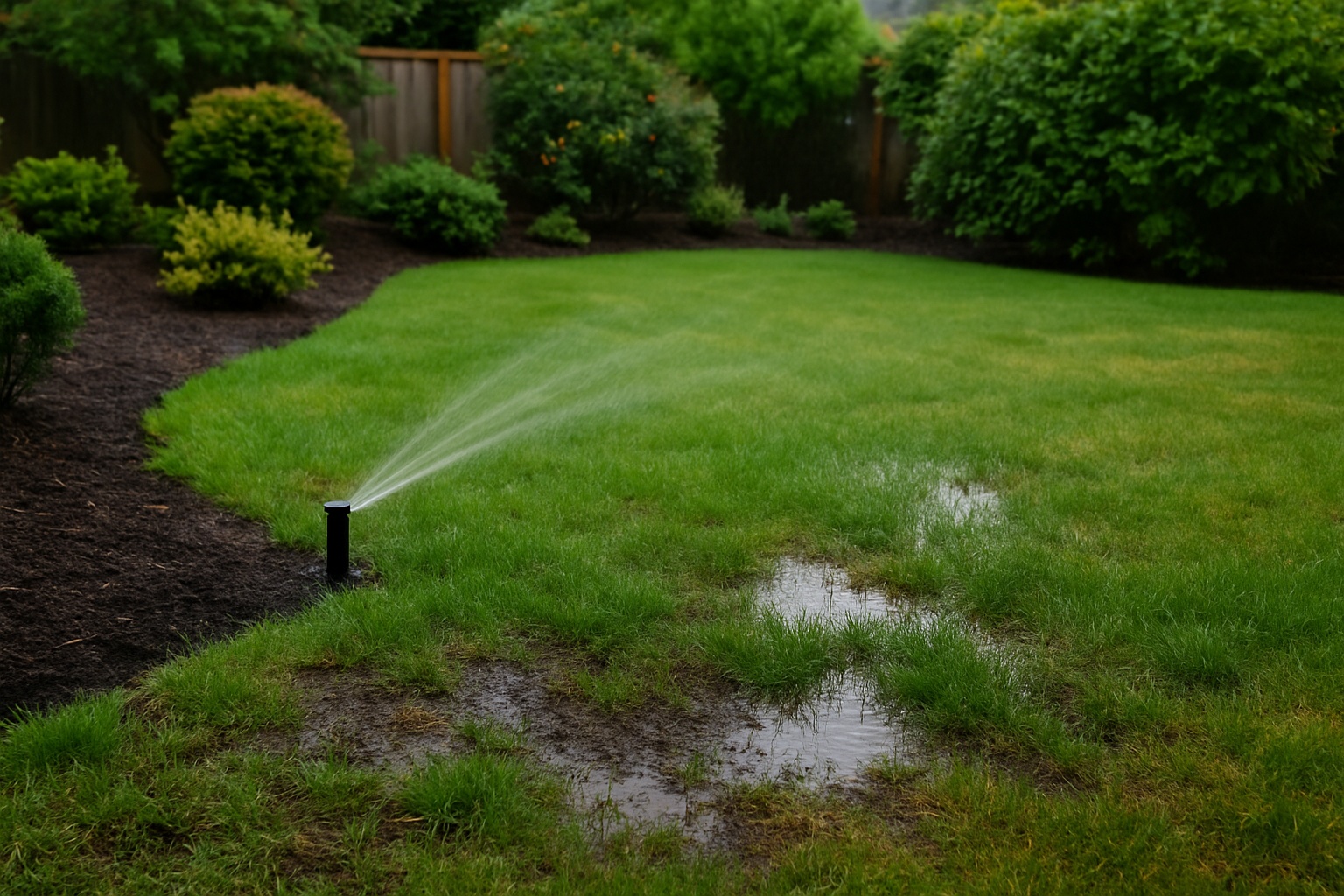
How Wet Springs Affect Bellevue Lawns and Gardens
Bellevue, WA often receives more rainfall in spring than most US cities. While this leads to lush growth, it also means homeowners must pay attention to soil moisture and irrigation schedules. Overwatering can cause root rot, fungal disease, and wasted water, while underwatering during a sudden dry spell can stress grass and ornamentals. The key? Adapt your watering to the actual weather—not just the calendar.
Signs Your Yard Has Had Enough Water
- Soil feels soft, spongy, or stays muddy for hours after rain
- Puddles persist in low spots or shaded areas
- Grass is growing fast, but lower leaves turn yellow
- Fungus, mushrooms, or moss starts to appear
- Footprints or mower tracks linger on the lawn
When to Resume Irrigation After Spring Rains
- Wait until the top 2–3 inches of soil have dried out
- Use a screwdriver or soil probe to test moisture—if it goes in easily and soil sticks, you don’t need to water
- Check the weather forecast; don’t water if more rain is expected soon
How to Adjust Your Sprinkler System
- Turn off or pause your system during periods of frequent rain
- Install a rain sensor or smart controller—these devices automatically skip watering if soil is still moist
- Reduce watering frequency as temperatures stay mild
- Focus irrigation on areas under trees or next to buildings that may dry out faster
Best Practices for Bellevue Lawns After a Wet Spring
- Aerate compacted soil to help roots breathe and reduce puddling
- Add organic matter or mulch to flower beds to improve drainage
- Raise your mower height to avoid scalping saturated grass
- Monitor for lawn diseases like red thread, rust, or snow mold
What to Avoid
- Watering on a set schedule regardless of rainfall—always adjust to the weather
- Running sprinklers if the lawn is soggy or has standing water
- Overwatering newly planted trees and shrubs; let the topsoil dry between waterings
- Ignoring slope and drainage issues in problem spots
Internal Resources
Resources for Further Reading
By adapting your irrigation schedule to Bellevue’s wet spring conditions, you’ll save water, prevent disease, and keep your yard thriving all season long.

